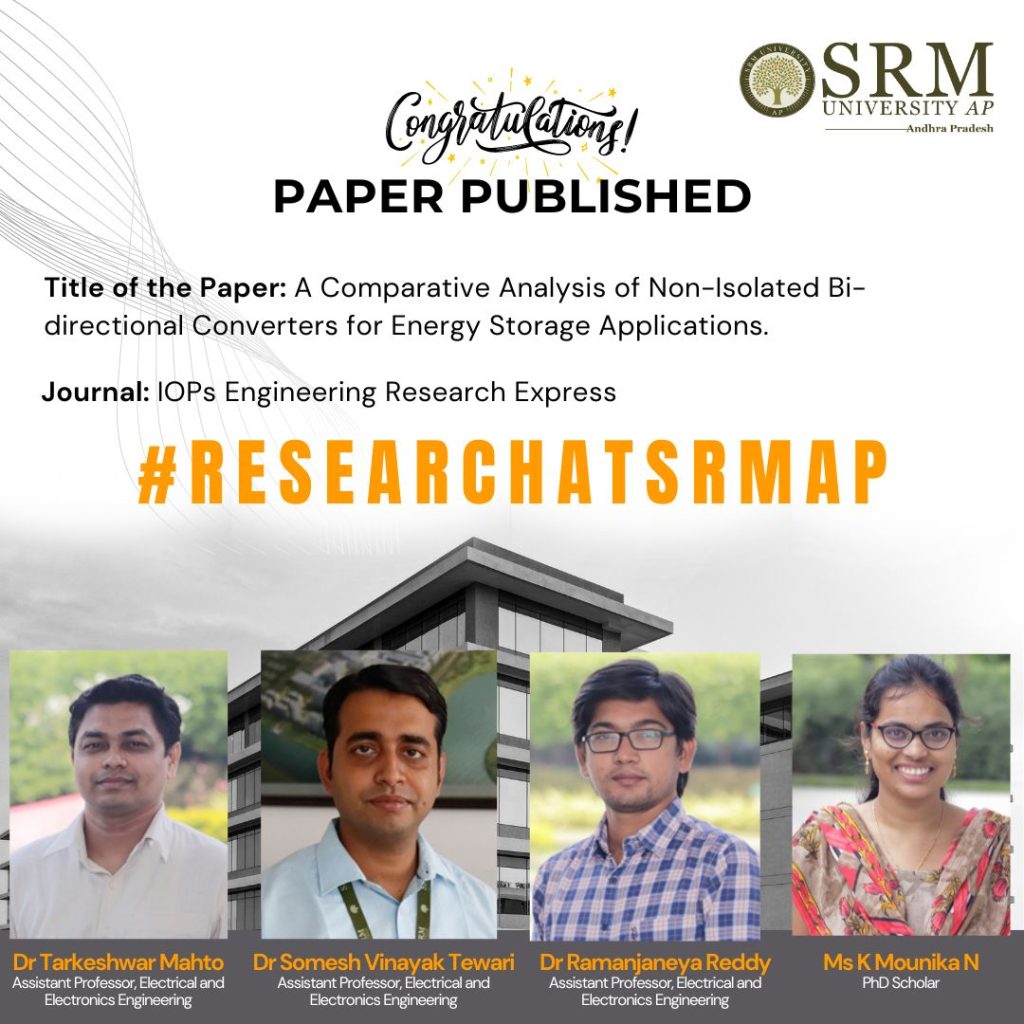
The Department of Electrical and Electronics Engineering is glad to announce that the paper titled “A Comparative Analysis of Non-Isolated Bi-directional Converters for Energy Storage Applications”, authored by Dr Tarkeshwar Mahto, Dr Somesh Vinayak Tewari, Dr Ramanjaneya Reddy, Assistant Professors and Ms K Mounika Nagabushanam, PhD Scholar has been published in the IOPs Engineering Research Express having an impact factor of 1.7. The paper explores various non-isolated bi-directional DC-DC converter topologies for renewable energy systems, providing insights into their performance and suitability for different applications.
Abstract
Bi-directional DC-DC converters (BDC) are required for power flow regulation between storage devices and DC buses in renewable energy-based distributed generation systems. The fundamental requirements of the BDC are simple structure, reduced switching components, a wide range of voltage gain, low voltage stress, high efficiency, and reduced size. There are different BDC topologies for various applications based on the requirements in the literature. Various BDCs are categorised according to their impedance networks. Isolated BDC converters are large due to high-frequency transformers and hence used for static energy storage applications whereas non-isolated BDC is lightweight and suitable for dynamic applications like electric vehicles. This paper reviews types of non-isolated BDC topologies. The performance of five non-isolated BDC converters under steady-state conditions is evaluated using theoretical analysis. On this basis, the suitability of BDC for different applications is discussed. Further advantages and limitations of converters are discussed by using comparative analysis. The optimisation of BDC for distributed generation systems from the perspectives of wide voltage gain, low electromagnetic interference, and low cost with higher efficiency is identified. Theoretical analysis of the converters is validated by simulating 200W converters in MATLAB Simulink.
The main challenges with energy storage systems are frequent failures due to frequent charging and discharging and the volume of the power converter. The team plans to:
- To design a converter with fewer components, low switching stresses, high power transfer capability, and higher efficiency to deliver continuous current to the energy storage system.
- To work on various control techniques to keep the DC link voltage of the propulsion system constant.
Link to the article

